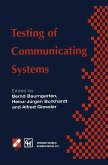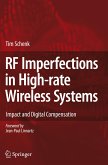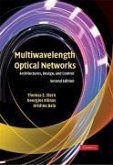Written specifically for a one-semester course, this textbook introduces the physical and engineering principles of communication systems using an accessible, yet mathematically rigorous, approach. Beginning with valuable background material on signals and systems and random processes, the text then guides students through the core topics, including amplitude modulation, pulse modulation, and noise. Key terms and formulae are highlighted throughout to help students identify essential points easily. Worked examples, practice problems and review questions reinforce concepts and enable students to develop confidence in solving problems on their own. To help visualize the concepts discussed, MATLAB-based exercises and examples are provided throughout, supported by an introductory appendix for students who are new to MATLAB. Each chapter ends with a practical applications section, showing students how concepts are used in real-life communication scenarios and devices. Figures from the book and a solutions manual, password-protected for instructors, are available online.
Hinweis: Dieser Artikel kann nur an eine deutsche Lieferadresse ausgeliefert werden.
Hinweis: Dieser Artikel kann nur an eine deutsche Lieferadresse ausgeliefert werden.








